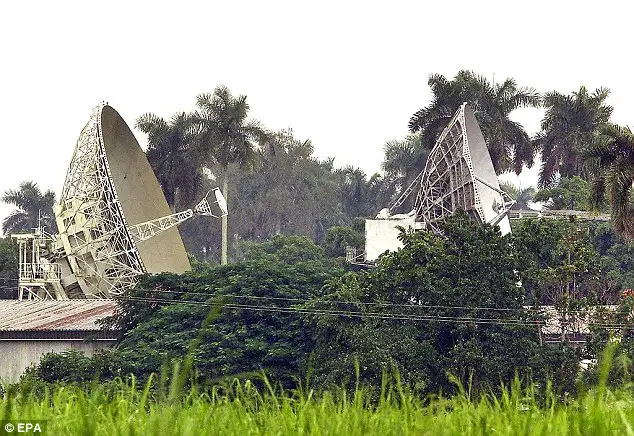Breaking news
Russian Armed Forces may return to former military bases in Vietnam and Cuba 71010164.
| 2016
|
|
|||
|
Defence & Security News - Russia
|
|||
|
|
|||
|
Russian Armed Forces may return to former military bases in Vietnam and Cuba
|
|||
|
The anti-aircraft missile and gun Pantsir-SM complex will be able to destroy targets at a distance of up to 40 kilometers due to a multifunctional targeting station. It is twice as far as the current modification can operate, First Deputy Director General and Chief Designer of the Central Device-making Design Bureau of Rostec State Corporation Alexander Khomyakov told reporters.
|
|||
|
|
|||
 Lourdes radar station Lourdes radar station(Credit: US Environmental Protection Agency) |
|||
|
|
|||
|
The Russian Armed Forces may return to the former Soviet bases in Cuba and Vietnam, according to the Gazeta.ru online news agency.
Owing to those bases, the Soviet Navy has stepping-stones for missions in the Atlantic and Indian oceans. The Russian military was ordered by the president to leave the facilities in 2001. Since then, the Russian Navy has had virtually no bases oversees unlike the US Navy operating hundreds of facilities like that worldwide. Dmitry Peskov, spokesman for the Russian president, declined to comment on Russia’s plans for setting up bases in Cuba and Vietnam, referring the journalist to the military. "The international situation is evolving, it is rather fluid. As you can see, the last two years have considerably altered the international affairs in general and the international security regime in particular," Peskov said without specifying the status of Moscow’s plans for the return to Lourdes and Cam Ranh. According to him, all countries assess the international developments and take whatever measures they deem necessary "in accordance with their national interests." As far back as summer 2014, Vladimir Putin assured that Moscow had no plans to restore its base in Lourdes. At the time, the Kommersant daily, referring to high-ranking sources, wrote about the Russian-Cuban talks on the subject. The signals intelligence (SIGINT) center in Lourdes was set up in 1967. The base was in Havana’s southern suburban area and was the main Soviet and then Russian SIGINT center. Putin announced its withdrawal in 2001 and the base was closed down in August 2002. Russia studied the feasibility of rebuilding its base in Cuba. The negotiations resumed in early 2014 after the developments in Ukraine that caused a sharp deterioration of the Russian-US relations. In July 2014, the Kommersant reported that Moscow and Havana had basically agreed on allowing Russia to resume using the Lourdes SIGINT center. In 2001, Putin decided to leave the naval base in Cam Ranh. Vietnam had leased the facility to the Soviet Union free of charge in 1979. The base hosted the 17th Task Force of the Soviet and then Russian Navy. "It was a departure that smacked of flight at times. Even valuable equipment had to be broken with sledge hammers. Now that there is a need for our permanent presence in the Indian Ocean to protect shipping lanes and accomplish other peacetime and wartime missions, it turns out that we lack naval bases there," Admiral Victor Kravchenko, former chief of the Main Naval Staff, says. "Only fancy the hauling of supplies from Vladivostok or Sevastopol from the viewpoint of distance alone. The same goes for the Atlantic." Unlike Russia, the United States has hundreds of bases all over the world, the admiral added, "while we have only Tartus as far as naval bases are concerned." The Russian Navy should return to Cam Ranh in Vietnam in the first place, Vice Admiral Vladimir Pepelyayev, former deputy chief of the Main Naval Staff, believes. "The Pacific Fleet badly needs this base as a stopover for its cruises in the Indian Ocean. We should not have abandoned the base. It was a grave mistake," Pepelyayev says. "We should return to Cuba as well. Our submarines would come there." According to the vice admiral, the Russian Navy badly needs forward operating bases. For instance, their absence makes the ships of the Mediterranean standing naval force go to Sevastopol for routine maintenance at present. Russia had made its first steps to returning to Cam Ranh before its relations with the West soured. In 2013, Russia and Vietnam signed an agreement on a combined submarine maintenance base in the Cam Ranh Bay, followed in 2014 by an agreement allowing Russian warships to use the Vietnamese base following a simplified procedure. Since 2014, Russian Air Force Ilyushin Il-78 (NATO reporting name: Midas) airborne tankers, which refuel Tupolev Tu-95Ms (Bear-H) strategic bombers, have been serviced in Cam Ranh too. This past spring, Defense Minister Sergei Shoigu also said Russia planned the development of its military bases in Kyrgyzstan, Tajikistan and Armenia. He added that the strengthening of the military component of the Shanghai Cooperation Organization was in keeping with Russia’s and its partners’ common interests. The defense minister made this statement during the 5th Moscow International Security Conference, according to the Gazeta.ru news portal. |
|||
|
|
|||
|
© Copyright 2016 TASS. All rights reserved. This material may not be published, broadcast, rewritten or redistributed.
|
|||


























